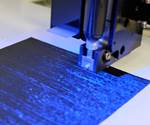Graphene Council partners with SAE International
The organizations will partner to share information on graphene and transportation advances and challenges, and will present their results at two events next year.

The Graphene Council, a global trade and professional association for producers, users and researchers of graphene, has announced a partnership with SAE International, a global association committed to advancing mobility knowledge and solutions. The partnership will enable SAE to provide its members with up-to-date information about commercially available forms of graphene and how to apply this novel material to solve technical challenges. SAE will help the members of The Graphene Council to better understand the engineering challenges and requirements impacting the development of the leading transportation systems of tomorrow.
The organizations will present the results of the project at eventAeroTech SAE’s on March 17-19, 2020, in Pasadena Calif., U.S., and SAE’s WCX World Congress Experience 2020, on April 21-23, 2020, in Detroit.
“This partnership will help accelerate the development of important solutions in some of the most critical sectors of our modern society, aerospace and land based transportation. Graphene has already demonstrated the ability to impart strength and reduce weight in composites, enable extremely small and highly responsive sensors, and has proven the ability to dramatically improve battery technology, just to name a few key areas,” says Terrance Barkan CAE, executive director of The Graphene Council.
“SAE International strives to provide our members and partners with the latest information, including the ability to identify and understand innovative new materials that enable the development of next level solutions. Our partnership with The Graphene Council provides access and understanding to one of the most disruptive new materials,” says Dave Weil, director of events for SAE International.
Graphene is defined as a single layer of carbon atoms arranged in a plane with a hexagonal (“chickenwire”) structure with the carbon atoms sharing a sp2-bond. The result is a material with properties that includes some of the highest ratings for strength, electrical conductivity, thermal conductivity and other valuable properties. Graphene has been demonstrated to have useful properties in an extremely wide range of applications that includes plastics, composites, coatings, energy storage, sensors, electronics, EMI shielding and others that may have direct relevance for SAE members.
Related Content
-
McLaren develops aerospace-inspired ART method for volume composite super car engineering
Automated rapid tape (ART) technique, already deployed at the MCTC and to be used for future McLaren models, is capable of producing lighter, stiffer and stronger carbon fiber structures with less waste.
-
Braided thermoplastic composite H2 tanks with co-consolidated molded boss areas to fit EV battery space
BRYSON project demonstrates possible designs, automated manufacturing and low permeability concepts, including EVOH liner and novel PPA matrix.
-
Infinite Composites: Type V tanks for space, hydrogen, automotive and more
After a decade of proving its linerless, weight-saving composite tanks with NASA and more than 30 aerospace companies, this CryoSphere pioneer is scaling for growth in commercial space and sustainable transportation on Earth.
.jpg;width=70;height=70;mode=crop)





